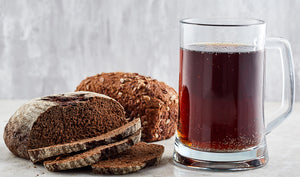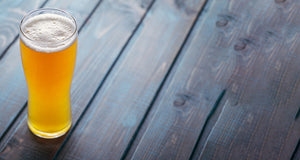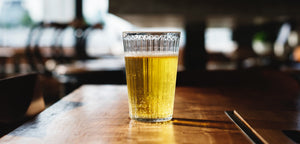In the 18th Century when hoppy, higher alcohol ales were gaining popularity in England, some brewers began experimenting with darker brews. The original English Porter grew out of the English Brown style, but was heavier and slightly sweeter. Soon the export of this new style of beer began to increase in areas including Ireland, South Africa and the newly colonized North America. English Porter eventually arrived in the Baltic States and people in these countries were very receptive to this dark beer as it provided a nice warming characteristic for these chilly regions.
In the early 1800's England's exports of beer to the Baltic region were slowed and eventually ceased when Napoleon put a large scale ban on British trade, known as the Continental Blockade. As the stock of Porters dried up in the Baltics, breweries began popping up to fill the void. However, these brewers weren't brewing the original Porter the British developed, they began altering it for ingredients available in their region, and this was the birth of the Baltic Porter.
The cooler temperature in the Baltic states allowed for a lager yeasts to replace ale yeasts, creating a cleaner tasting beer. Advancing the Baltic Porter even further was the invention of the drum kiln. Daniel Wheeler's kiln made it possible for pale malt to be kilned darker without added smokiness. The increased availability of dark pale malts allowed breweries to increase their production of the Baltic Porter, and it soon became the beer that defined the region.
Want to brew your own Baltic Porter? Look no further than our original BrewHQ Baltic Porter kit, available in extract and all grain.
If you want to create your own Baltic Porter recipe, below are some tips to make sure you get the best results.
Brewing Tips
- Grain Bill: Your base malt (usually 2-Row, Pale or Munich) should make up 50-70% of your grain bill. Don't go too light - if you use 2-Row or Pale, make sure you use Munich for at least 20% of your base. Dark malts should be at least 10% of your bill, but ideally no more than 20%. Use medium crystal (60 ºL) for a caramel flavour, or use dark crystal (70 ºL or higher) to impart raisin, nut or plum flavours.
- Hops - Less Is More: Hops are not the star in the Baltic Porter show. A proper Baltic Porter will very little, if any, hop aroma and at the most a medium bitterness. The type of hops used in Baltic Porter vary based on the region, but popular ones are Saaz, Hallertau & Tettnag.
- To Lager Or Not To Lager: Ideally you'll want to use a lager yeast and ferment at lower temperatures, but you can use an ale yeast for a Baltic Porter. Just make sure you ferment at the lower end of the temperature range for your ale yeast.
- Aging: A Baltic Porter will taste great when fresh, but like a Russian Imperial Stout, this beer will only get better with age. Store at cellar temperature for at least a year for best results.



